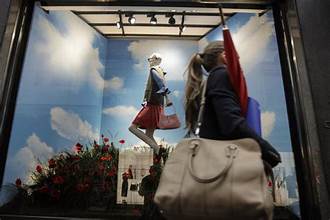50 Million Consumers Abandon Luxury Brands Amid Rising Prices and Broken Promises
The luxury goods market, after years of growth, is facing its first slowdown since the 2009 Great Recession. According to Bain & Company’s latest report, 50 million luxury consumers have stopped purchasing high-end items like designer bags, watches, and scarves, or have been priced out of the market. Only one-third of luxury brands are expected to see positive growth this year, a significant decline from two-thirds last year.
Brands Struggling with Consumer Expectations
To survive, luxury brands must reevaluate their value propositions, especially for younger shoppers like Gen Z, whose expectations continue to rise. Experts like Marie Driscoll of Fortune suggest that reinvention is critical, urging brands to surprise and delight consumers with fresh, inspiring products and memorable shopping experiences. She compared the situation to an ice cream sundae, which becomes boring after repeated servings.
Broken Promises and Price Increases
One of the key reasons behind the slowdown is that luxury brands have broken promises to their consumers. Over the past few years, prices for luxury goods have soared without a corresponding increase in innovation, quality, or service, which consumers expect from high-end brands. As a result, major names like LVMH (owners of Dior and Louis Vuitton), Burberry, and Kering (owners of YSL and Gucci) have missed their revenue targets. LVMH even lost its position as Europe’s most valuable company in September 2023, overtaken by Novo Nordisk.
Rising Prices and Changing Preferences
Consumers are struggling with high prices that don’t match their salary growth, leading many to reconsider their luxury purchases. The market is also being impacted by the rise of fast fashion and social media influencers, who can respond to trends much faster than traditional luxury brands.
Many consumers are now seeking unique, customized, and bespoke items that reflect their personal style. Hitha Herzog, a retail analyst, emphasizes that the desire for exclusivity has become central to luxury purchases. However, many luxury brands fail to provide truly one-of-a-kind experiences, especially compared to Hermés, whose Birkin bag continues to perform well thanks to its exclusivity, long waitlists, and high spending thresholds.
China’s Impact on Global Luxury Sales
China has been a key driver of luxury growth since the early 2000s, but the country’s economic slowdown and lackluster consumer confidence have led to a significant decline in spending. LVMH and Kering both reported lower-than-expected earnings, largely due to the softening demand in China. The entire luxury sector is predicted to decline by 2% this year.
Despite these challenges, some sectors, like travel, fine wine, and luxury cars, are still showing modest growth. Experts also predict a gradual recovery in major markets such as China, Europe, the U.S., and Japan by late 2025, with favorable currency exchange rates in Japan further benefiting shoppers.
Key Takeaways:
- 50 million luxury consumers have stopped buying designer items due to high prices and lack of innovation.
- Luxury brands must adapt to meet rising expectations, especially among Gen Z consumers.
- Brands like LVMH and Burberry have missed revenue targets, impacted by fast fashion and economic factors.
- China’s economic slowdown has led to reduced luxury spending, further straining the market.
- Sectors like fine wine and luxury cars are still experiencing growth, while the luxury goods sector overall faces a 2% decline.

